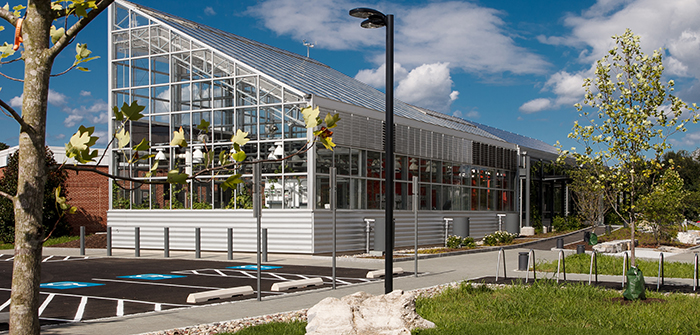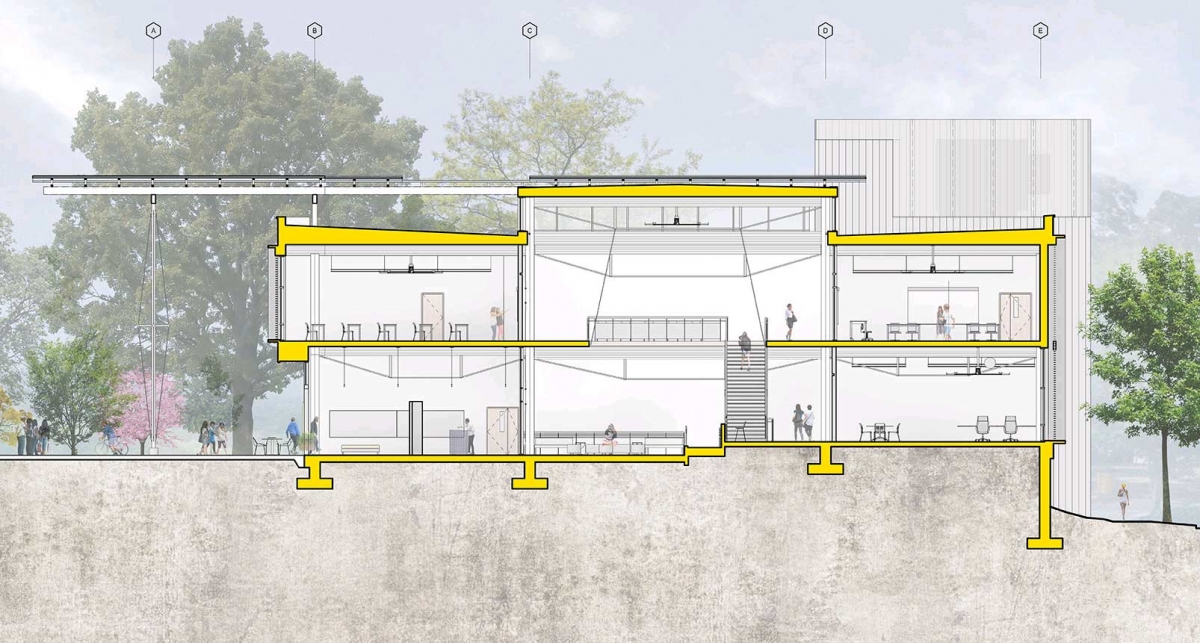
https://gettysburgcollege.weebly.com/uploads/4/1/0/1/41010627/5731727_orig.jpg
“I entered architecture with the commitment to connect people and nature through the buildings we spend 90% of our time in.” ~Amanda Sturgeon CEO of the International Living Future Institute
My essay outline sustainability on campus in the form of buildings. My partner had decided to work on building renovations while I have focused on the design and creation of new buildings. This included ways in which common schools go about implementing sustainability within a building and how that can be applied to Gettysburg college. I began with analyzing guiding programs such as Leadership in Energy and Environmental Design (LEED) and Living Building Challenge (LBC) that in effect help colleges reach a level of sustainability by providing among many things, most prominently a goal and standard for them to reach. This in effect at Gettysburg would set a target on building sustainability whereas if there weren’t Gettysburg would have little standards to measure it against. To achieve the standards of LEED or LBC the building must accomplish several advancements that make it sustainable. Through research, I was able to determine the most important and effective attributes of building sustainability. These attributes: water, energy, and materials, provide a strong foundation to achieve sustainability. Colleges have followed LEED and LBC guidelines and strongly wish to continue their relationship. Through looking at Dickinson, Hampshire College, and Georgia Institute of technology. I understood the growing trend in sustainable buildings. The trend of growing building sustainability is often guided by programs like LEED and LBC and focus strongly on the attributes of water, energy, and materials.
Sustainability Attributes
Water

Water efficiency has great importance when it comes to sustainability within buildings. Colleges that seek to make more sustainable water standards often engage in the practice of gathering water and reusing water. These factors within the realm of water allow colleges to become more sustainable. By capturing, water colleges are able to limit use from larger plants and become more independent and self-sustaining. Reuse of water allows colleges to decrease the amount of clean water they require. Through filtering water through a greywater system to a more advanced system of filtering all water, the reuse of water can make a significant impact on the amount of water a building consumes.
Energy

Energy efficiency is also of great importance when it comes to achieving sustainability. Energy can be often easily overused and mismanaged. Through different initiatives, this can be significantly reduced. With implementing passive solar design buildings are enabled to not use electricity to light and heat a room and instead rely on sunlight to do these missions. Another energy efficiency measure is to implement clean energy bulbs and/ or motion sensors; these are small effects not having to do with the architecture of the building but significant enough to make an impact on the building’s sustainability. A final way in which colleges are implementing energy sustainability is by using solar panels among other clean energy initiatives. This can limit dependence on fossil fuels while making the building more self-sustaining. Making a building energy sustainable can be sought after through many ways that help limit overuse and dependence on fossil fuels.
Material

The ways in which a building uses the materials it has are another factor that helps determine building sustainability. The main ways a building can reach sustainability is by their use of rescued or local materials. Buildings that takes advantage of materials discarded through other projects demonstrate sustainability through the recycling of materials and allowing for less waste. Another large factor in attaining sustainability through material design is by using local materials. This helps reduce fossil fuels used in transportation, possible cutbacks on large corporations that greatly damage the environment through dangerous practices, and supporting local economies. All these attributes help to foster sustainability. Materials sustainability depends on the large practices of gathering materials to do so in a clean and environmentally efficient way.
Colleges
Dickinson College

https://www.dickinson.edu/images/Sust_Greenhouse_700x335
One college that has led the way in sustainability is Dickinson. Their early commitment to creating overall greater sustainability has been strong and this extends to their creation of new buildings on campus. Dickinson has confidence in its ability to only construct LEED Silver certified buildings. Dickinson has currently five gold-certified LEED buildings of which all participate in using water, energy, and materials more sustainable. They have used technologies such as low flow waterways which help reduce water waste. They have also decided to get their energy from clean wind power. Their use of materials uses nearly ¼ of recycled materials. They have a devotion to the LEED program which helps guide them in the direction of implementing sustainability in the realms of water, energy, and materials.
Hampshire College

https://www.hampshire.edu/discover-hampshire/rw-kern-center
Another college at the forefront of sustainability through a different angle is Hampshire college. Of which instead of seeking LEED certification has sought LBC certification. A project that was started in 2012 and finished in 2018 has received LBC certification. The LBC is more intensive than that of LEED and essentially requires the building to pump out more clean products than it absorbs. Its philosophy is that buildings should put more back into the environment than it should take, such as producing more energy than it consumes or generating more clean water than it consumes. This LBC building will in effect use greywater systems, generate nearly all of its electricity on-site, and will use large amounts of recycled materials. This goal of an LBC building provides another source of devotion to sustainability across college campuses.
Georgia Institute of Technology

https://livingbuilding.gatech.edu/sites/default/files/images/image-map.jpg
As of recent Georgia Institute of Technology (Georgia Tech.) is implementing similar sustainability initiatives with the construction of new buildings. As with Hampshire College, Georgia Tech. is pursuing LBC certification for its upcoming Kendeda Building. This building with regards to water provides more progressive measures such as gathering the water on-site that it uses within the buildings. Through energy advancements, they generate solar energy on-site while also demonstrating the use of passive solar design. This building has in effect been designed with materials that were reused from older buildings torn down on campus. With this college more devotion seems to be placed on sustainability. With each college building analyzed in congruence with progressing years sustainability within buildings is only increasing in both the widespread use across many institutions and the effectiveness of the buildings being designed.
Key Points
- LEED and LBC
- Major Environmental Factors: Water, Energy, and Materials
- Schools to Analyze: Dickinson, Hampshire College, Georgia Institute of Technology
Links
- http://leed.usgbc.org/leed.html
- https://living-future.org/lbc/
- https://www.dickinson.edu/info/20052/sustainability/2283/buildings_and_grounds
- https://www.hampshire.edu/discover-hampshire/rw-kern-center
- file:///C:/Users/samar/AppData/Local/Packages/microsoft.windowscommunicationsapps_8wekyb3d8bbwe/LocalState/Files/S0/1137/Attachments/campus%20buildings%20producing%20more%20than%20they%20consume[2179].pdf
https://docs.google.com/document/d/1RAzqQyP2PNthn5zvm77IH3vRAJXCqtphJeVk0XmnyXg/edit?usp=sharing